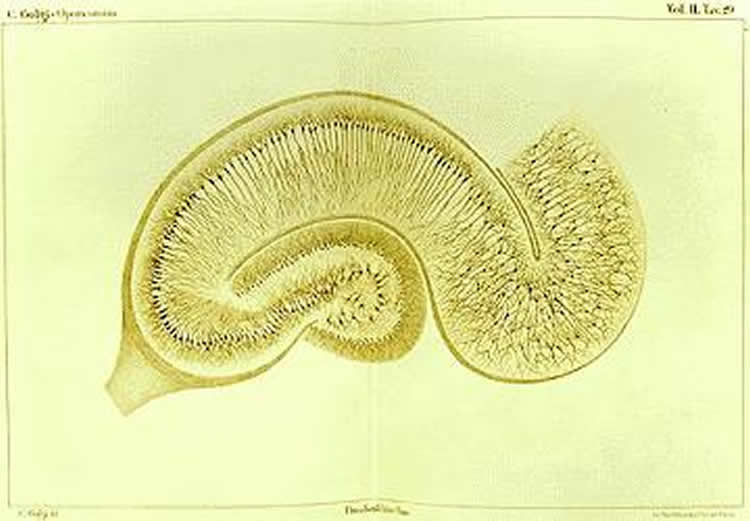Summary: Mouse study reveals a clear correlation between cognitive ability in aging and presynaptic calcium levels.
Source: University of Leicester
As we get older, our memory starts to fail and it becomes harder to learn new things. It would not be unreasonable to assume that this is caused by brain cells gradually dying off but that doesn’t happen. So what causes age-related cognitive impairment?
The answer lies in synapses, the electrochemical connections between neurons that use neurotransmitter molecules to create the web of functions within the central nervous system. Professor Nick Hartell looked at whether calcium levels in the hippocampus, part of the brain necessary for learning and memory, might play a part.
Most research in this area has concentrated on post-synaptic cells – the ones which receive neurotransmitters – simply because measuring calcium levels in pre-synaptic cells is very difficult. Nick and his colleagues stepped up to the challenge, by developing a special strain of mice which express a calcium-sensing fluorescent protein within the pre-synaptic parts of their hippocampus.
The research used mazes and object recognition tests to study the cognitive functions of mice at ages of 6, 12, 18 and 24 months, and found a clear correlation between cognitive ability and pre-synaptic calcium levels. In older mice, which perform less well in the tests, the homeostatic processes that should keep intracellular calcium within limits start to falter, creating a build-up of calcium in pre-synaptic cells within the hippocampus.

Experimentally raising the level of intracellular pre-synaptic calcium in the brains of young mice altered the synaptic properties so that they behaved like those from the older mice. Most fascinating of all the results is that the reverse is also true: lowering intracellular calcium in old mouse brains rejuvenates their synapses – which obviously has enormous potential significance for age-related health issues in humans.
The paper Changes in presynaptic calcium signaling accompany age‐related deficits in hippocampal LTP and cognitive impairment was published last month in the journal Aging Cell.
Funding: Professor Hartell’s research was funded by the Biotechnology and Biological Sciences Research Council (BBSRC).
Source:
University of Leicester
Media Contacts:
Nick Hartell – University of Leicester
Image Source:
The image is in the public domain.
Original Research: Open access
“Changes in presynaptic calcium signalling accompany age‐related deficits in hippocampal LTP and cognitive impairment”. Daniel Pereda, Ibrahim Al‐Osta, Albert E. Okorocha, Alexander Easton, Nicholas A. Hartell.
Aging Cell. doi:10.1111/acel.13008
Abstract
Changes in presynaptic calcium signalling accompany age‐related deficits in hippocampal LTP and cognitive impairment
The loss of cognitive function accompanying healthy aging is not associated with extensive or characteristic patterns of cell death, suggesting it is caused by more subtle changes in synaptic properties. In the hippocampal CA1 region, long‐term potentiation requires stronger stimulation for induction in aged rats and mice and long‐term depression becomes more prevalent. An age‐dependent impairment of postsynaptic calcium homeostasis may underpin these effects. We have examined changes in presynaptic calcium signalling in aged mice using a transgenic mouse line (SyG37) that expresses a genetically encoded calcium sensor in presynaptic terminals. SyG37 mice showed an age‐dependent decline in cognitive abilities in behavioural tasks that require hippocampal processing including the Barnes maze, T‐maze and object location but not recognition tests. The incidence of LTP was significantly impaired in animals over 18 months of age. These effects of aging were accompanied by a persistent increase in resting presynaptic calcium, an increase in the presynaptic calcium signal following Schaffer collateral fibre stimulation, an increase in postsynaptic fEPSP slope and a reduction in paired‐pulse facilitation. These effects were not caused by synapse proliferation and were of presynaptic origin since they were evident in single presynaptic boutons. Aged synapses behaved like younger ones when the extracellular calcium concentration was reduced. Raising extracellular calcium had little effect on aged synapses but altered the properties of young synapses into those of their aged counterparts. These effects can be readily explained by an age‐dependent change in the properties or numbers of presynaptic calcium channels.
